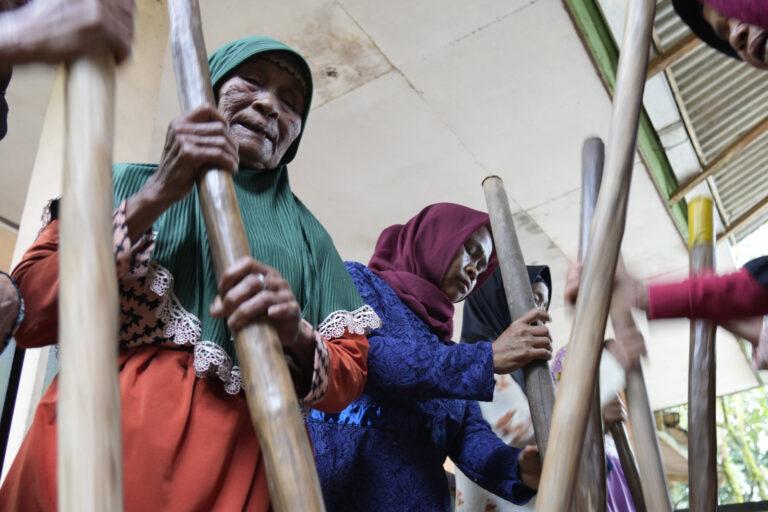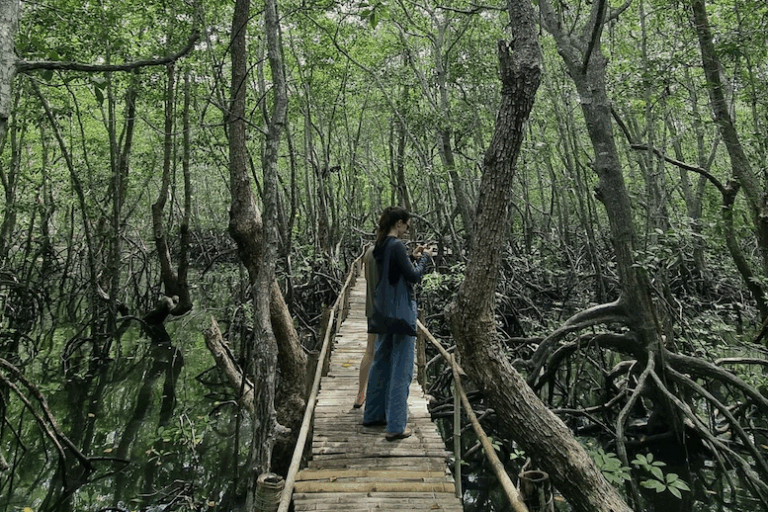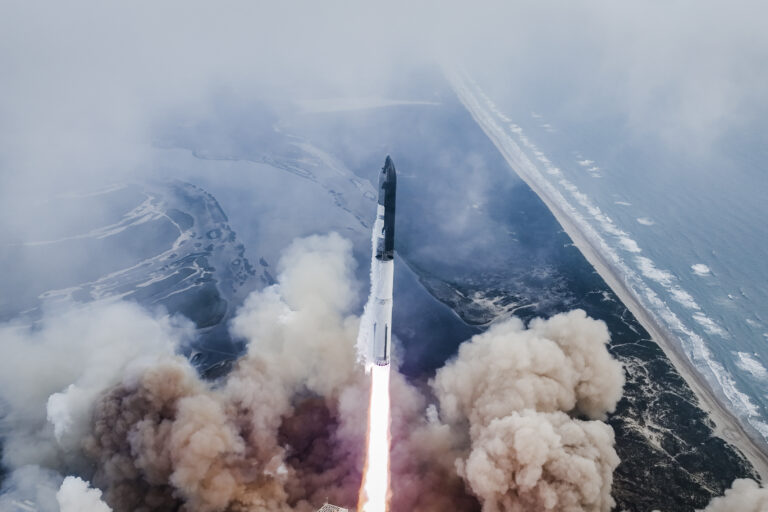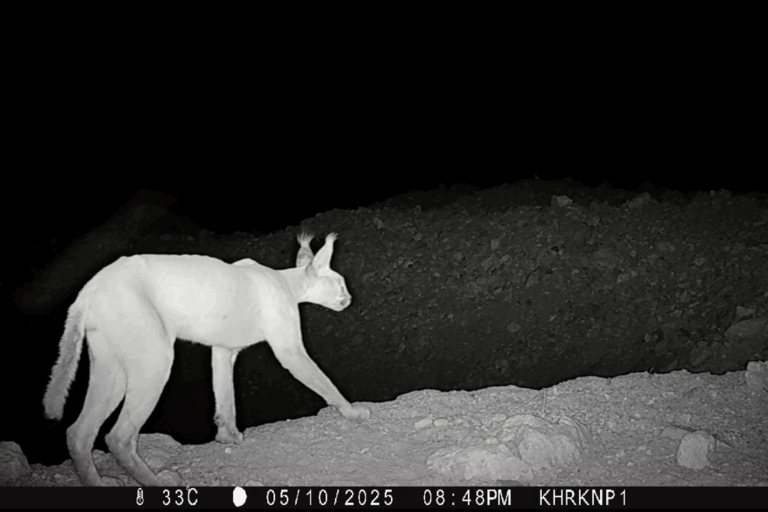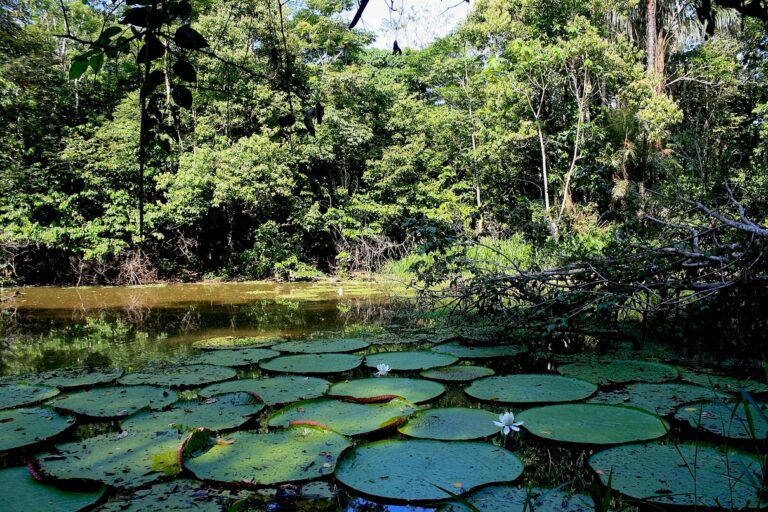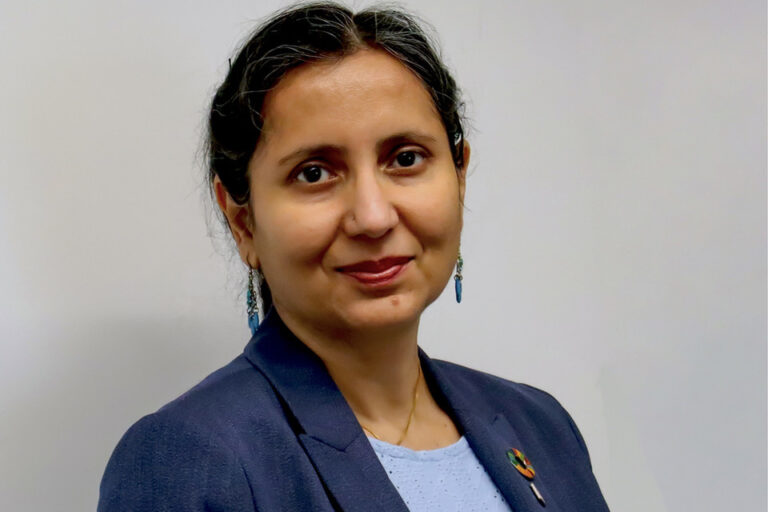- For more than 50 years, the Xavante indigenous group has been fighting to regain sovereignty of the Marãiwatsédé Indigenous Reserve in Mato Grosso state. The most recent obstacle is the federal government’s plan to pave BR-158, the interstate highway that cuts through the middle of the reserve.
- Marãiwatsédé is the most heavily deforested indigenous reserve in the Legal Amazon: around 75% of its native vegetation has already been cut down. The Xavante suspect that paving the dirt track is part of the federal government’s plan to authorize leasing part of the reserve to ranchers in the region.
- In 2009, the Xavante began a lengthy negotiation process with government agencies to define alternatives to the original roadway. It was decided that BR-158 would circumvent the reserve, running to the east of its borders. But the government of President Jair Bolsonaro does not support the change, resulting in a stalemate that has escalated tensions in the region.
The grief that plagues the Xavante people of northeastern Mato Grosso state in Brazil seems far from over. For more than 50 years now, the indigenous group has been fighting to regain sovereignty of the Marãiwatsédé Indigenous Reserve, which covers 1,650 square kilometers (640 square miles) in the valley where the Araguaia and Xingu river basins meet. Their biggest obstacle today is an unfinished interstate highway, the BR-158, that cuts through their land. The tension in the reserve has been growing, and the federal government has failed to find a solution for the impasse. On the contrary, the ministry of infrastructure insists on keeping the current roadway, which has already given way to a series of threats to the indigenous people.
On Nov. 19 last year, the government included the 121 km (75 mi) of dirt road of BR-158 carved into the Marãiwatsédé Indigenous Reserve on its list of priorities for future concessions.
“How [can the government] make a decision over the interstate without talking with us?” Damião Paridzané, the cacique, or historic leader, of the Xavante, said in a statement to Mongabay. “You can’t cut down a tree here without asking us. It seems as if they want to do everything without consulting with the Indians.”
Interstate BR-158 has been associated with such problems as criminal invasions and illegal fires in the dwindling native forest that remains in Marãiwatsédé. It is now the most heavily deforested indigenous reserve in the Legal Amazon, with an accumulated loss of 75.7% of vegetation, according to Brazil’s Monitoring Deforestation in the Brazilian Amazon by Satellite Project (known as PRODES). What remains now are “islands” with vestiges of unique vegetation, characteristic of the transition between the biomes of the Amazon rainforest and the Cerrado savanna.
Cacique Damião’s passions flare when the subject turns to the government’s plan to pave the original trajectory of Interstate BR-158, which it had previously been agreed would be diverted to circumvent the reserve rather than cut through it: “When are they going to keep the promise they made, to move the interstate far from here?”
In 2009, the Xavante began a long negotiation with the National Department of Transportation Infrastructure (DNIT), the National Indian Foundation (FUNAI), the Brazilian Institute of the Environment and Renewable Resources (IBAMA) and the Federal Public Ministry in order to define alternatives to the road’s original course. It was decided at that time that Interstate BR-158 could be diverted to the east of the reserve.
Though progress since then was slow, the project advanced with environmental authorizations for the construction of the new trajectory. But the Ministry of Infrastructure under the new president, Jair Bolsonaro, does not support the alternative.
The ministry confirmed to Mongabay that the plan is indeed to pave the 121 km that cut through the reserve. On the other hand, the ministry guaranteed that it would follow “all the legal formalities, including the participation of the indigenous communities.”
Others involved in the matter declined to comment, including the secretary of infrastructure for Mato Grosso state, and the offices of the mayors of Alto Boa Vista, Bom Jesus do Araguaia and São Félix do Araguaia, the municipalities that comprise the indigenous lands.

Broken agreements and a promise of war
The Xavante’s fight for their lands is intimately connected to BR-158. The interstate symbolizes a trauma inflicted during a time of dictatorship: in 1966, around 400 members of the ethnic group were herded onto military planes and expelled from their territory. The area was evacuated explicitly to enable the clearing of forest for BR-158.
“The highway is part of the history of the Xavante and the fight to reclaim their territory,” says public prosecutor Wilson Rocha Assis. He was part of the Federal Public Ministry in Barra do Garças, Mato Grosso, where he worked for reparations for violations against the ethnic group.
He also participated in the development of the alternative trajectory for the highway, and called the new administration’s insistence on sticking with the original course a “mistake.” “Veering east would be a win for everyone, because it would diminish the threats to the Marãiwatsédé while integrating municipalities that are left out, like Serra Nova Dourada, Mato Grosso, strengthening the local economy,” says Assis, who now works in Goiás state.
The minister of infrastructure, Tarcísio Gomes, disagrees. According to him, the decision to maintain the course of the interstate running through the indigenous land is, first and foremost, an economic issue.
In June 2019, he discussed the impasse with the director general of the National Department of Transportation Infrastructure, Antônio Leite dos Santos Filho, and politicians from Mato Grosso allied with agribusiness — including Governor Mauro Mendes and federal representatives Neri Gueller and Carlos Fávaro of the ruralist caucus.
On that occasion, Gomes said the plan was to substitute the wooden bridges inside the reserve with concrete structures, as well as to finish paving the stretch of road through Marãiwatsédé. “We are going to deal with whatever we have to, but BR-158 will have the same original course, which makes more sense economically … This is why we’re going to fight. Leave the confrontation to us,” the minister said.
The coming fight could very well be literal. The Xavante have made clear they are ready to face the ultimate consequences if the interstate is not redirected: “Let it be clear that our decision is for the destruction of the bridges cutting through our territory. We know that this action will cause conflicts, but it is the only alternative we have left,” they wrote in a letter to the National Department of Transportation Infrastructure in 2018.
One of Damião’s sons, Cosmo, also criticized the interstate’s legacy in the reserve. “I say, as an indigenous man, who lives with my community on a daily basis, that our situation is precarious. This road is being utilized without a landowner … They are only attending to people who have economic interests,” he said at a public hearing in Congress. At the time, lawmakers insisted on the controversial pavement plan.
Last July, the Federal Public Ministry in Mato Grosso spoke up, demanding greater flexibility from the federal government in resolving the stalemate. It filed a lawsuit to force the government to shut down the stretch inside Marãiwatsédé. According to the Federal Public Ministry, paving the road would facilitate new invasions and other threats, further suggesting that the Xavante demands do not move the federal government to action.
“Paving the road will have an irreparable impact on the landholding order in the region and make it impossible for the authorities to make good on their obligations to the Xavante,” federal prosecutor Everton Pereira Aguiar Araújo said in the lawsuit.
He also said ”there is an evident correlation between the existence of the roadway [BR-158] and the incidence of damages to the indigenous land,” and criticized the government’s priorities, saying its “greatest concern is to maintain Interstate BR-158 and that all other issues are accidental.” The lawsuit is now circulating in the federal courts in Mato Grosso, with no decision announced yet.

A history of invasions, resistance and violence
BR-158 was also the stage for a conflict that deeply scarred the Xavante people. In 1992, the largest invasion of the reserve took place right at the intersection with another highway, BR-242, where a village called Posto da Mata was founded.
After a 20-year saga in the court system, the Supreme Court of Brazil (STF) ruled that the invaders be expelled. Between 2012 and 2014, the indigenous people retook the area with the support of law enforcement agencies and the Federal Public Ministry. But around 2,000 people resisted, leading to a dangerous escalation in tensions.
“[The invaders] broke into FUNAI headquarters in Marãiwatsédé and set fire to everything — destroying documents, equipment and whatever else was there,” says prosecutor Wilson Assis, who worked on the case.
At the time, public figures like Damião Paridzané and the bishop emeritus of São Félix do Araguaia, Dom Pedro Casaldáliga, as well as FUNAI employees, faced death threats — no trivial matter in an area known to have assassins for hire and gunmen since the 1960s.
The Federal Public Ministry accused 13 people of being part of a criminal organization that had coordinated the invasions. In its complaint, it alleged that this group manipulated public opinion in the municipalities neighboring the reserve, like Alto Boa Vista and São Félix do Araguaia, with the objective of favoring large-scale farmers and local politicians.
The criminal scheme even spilled over into Congress. The investigation revealed ties between the overseers of the invasions and representatives in Brasília. The Supreme Court went so far as to open an investigation into the case. In 2016, the inquiry was shelved at the request of the court’s president, Dias Toffoli, on grounds of judicial confidentiality.
The contentious expulsion of the invaders turned into a political powder keg in the region. Tensions got to a point that the Federal Public Ministry was forced to make a statement about the impasse in early 2019, promising “an energetic and effective response” in the event of any attack or reoccupation of the old Posto da Mata.
For Damião, the current climate of tension serves only to weaken the indigenous people’s sovereignty over their lands.
In particular, the Xavante believe that the federal government wants to authorize the leasing of part of the reserve to ranchers in Araguaia-Xingu. President Bolsonaro has never made any attempt to hide his support for the idea of leasing out indigenous lands.
“Do they think we’re fools?” Damião said. “If you lease to one, then another one will pop up, then a bunch more. What we want is support, real help from FUNAI to take care of our land.”
This story was first reported by Mongabay’s Brazil team and published here on our Brazil site on Jan. 23, 2019.






